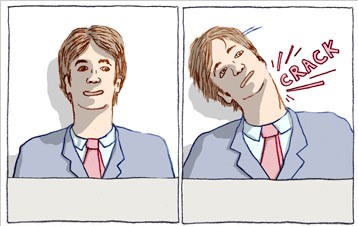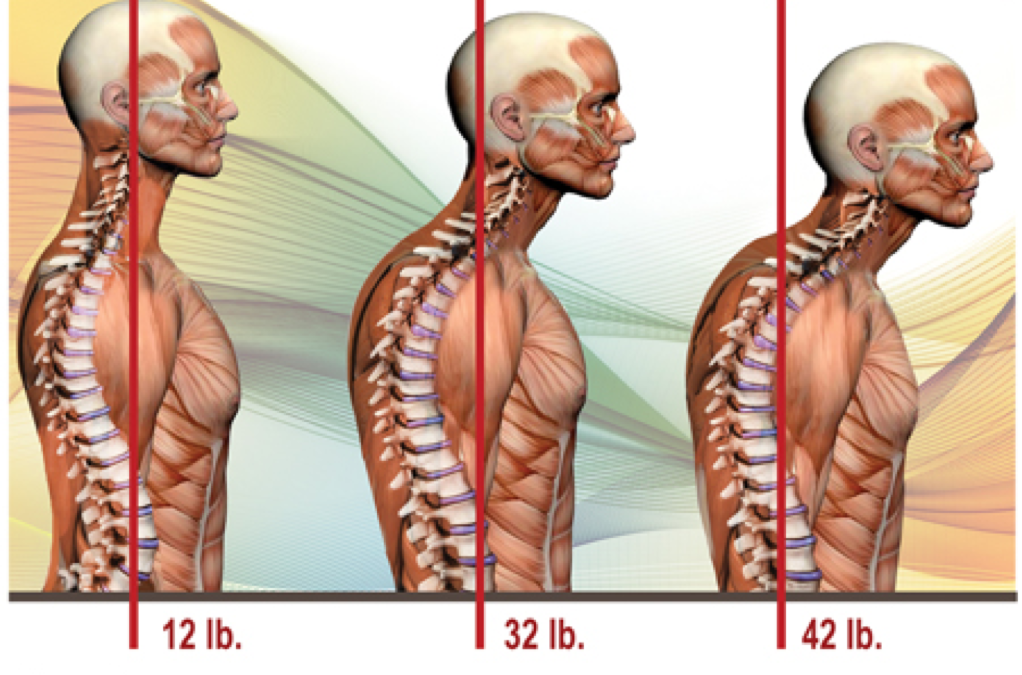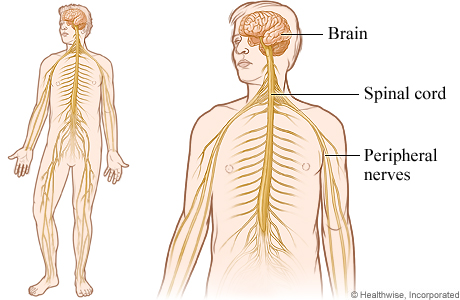
by Charles Herbert | Jul 11, 2014 | Chiropractic |
Lots of people click their own necks; sometimes for relief, sometimes for dramatic effect, sometime just because they can, often without trying to. But what is the difference between clicking it yourself and a Chiropractor doing it? The need to click one’s own neck is potentially a sign of an underlying problem. Often the need to do it is down to poor posture putting excess stress on the joints in the cervical (neck) spine. Due to the stresses on the spine, the joints become restricted and uncomfortable. If an on-going problem, it may get to the stage of a trapped nerve! When you click your own neck (self manipulating) you are mostly ‘clicking’ either the joint above or below the restricted one that needs to move properly. Chiropractors train over 4-5 years to adjust the right joint in the right way (see picture below). This relieves the restricted joint and frees up any trapped nerves. Is there anything wrong with clicking my own neck? The danger of doing it yourself is you’re clicking the wrong joints. When you self manipulate it may make the same ‘popping’ noise (air being released from the joint) as a Chiropractic adjustment; it might provide some relief, due to the natural release of a pain-relieving chemical called endorphins. But it can cause damage. When a joint is restricted, the joints above and below work harder to compensate for the lack of movement in the stiff joint. So these joints are moving too much already and when you self adjust you are forcing them to move even further (see picture). This can, over time, cause stretching of the...

by Charles Herbert | Jul 1, 2014 | Chiropractic |
How to activate your core muscles – you’ve gotta ‘Tuck it!’ Before you do anything you need to ‘Tuck it!’. When I say ‘Tuck it!’ I mean engage your core muscles. Your core muscles are like a corset around your low back that support your spine. If you don’t use them properly then your spine takes more load than necessary and you’re exposing yourself to potential back problems. So when you lift a child, get out of a chair, go for a run or even stand still you need to ‘Tuck it!’. So how do I ‘Tuck it!’? So, firstly we need to get your back in the right position. In a standing position put your hands on the top of your pelvis (the bony bit in your waist) and rock your pelvis back and forth. By this I mean, stick your bum out as far as you can and then tuck it in as much as you can without moving your hands back and forth. When you can do this, find the mid point between fully back and forward. This is your neutral pelvic point. In this position, imagine a piece of string attached to the top of your head pulling you up. As you lift up, you should feel the muscles at the front between your pelvic bones tighten slightly. These are called the transverse abdominis, one of the main core muscles for your low back. Now take a deep breath in. As you exhale, draw your belly button back towards your spine. Practice this a few times and you should really feel the muscles in your...

by Charles Herbert | Jun 6, 2014 | Chiropractic |
Do you have the weight of the world on your shoulders? Well, you do have a heavy weight on your shoulders. Your head! The average human head weighs 8-12lbs (4-5kg), that’s about the same weight as a bowling ball! The thing that stops you noticing the weight of your head is the suspension in your neck. What I mean by this is the curve in your cervical (neck) spine has a natural 43 degree arc, like a banana, that acts like suspension for your head. As you move around, whether walking or sitting down, the curve in your neck compresses like a spring to take the pressure of your head off your body. Sometimes, due to bad posture whilst reading or working at a computer (or texting!!), you can move your head forward of your shoulders. This common posture is called forward head carriage (FHC). FHC has 2 main effects: it reduced your 43 degree (suspension) arc in your neck, and it moves the weight of the head forward from your centre of gravity. Loosing your internal banana As you move your head forward it places increased stress on your neck and shoulders. For every inch you move your head forward you head effectively weights 10llbs more! You can feel the effect of that when you next pick up a bowling ball (we have one in our centre in Bristol so please ask us). Hold the ball close to your chest and feel the weight of the ball, then move it away from your body and feel how much harder it is to hold. That is exactly what the...

by Charles Herbert | May 28, 2014 | Chiropractic |
What causes sciatica pain? One of the most common things people complain of, when the come to see us, is sciatica. When we ask where is hurts, some point to their leg, some to their back and a few to their shoulder. Clearly not everyone is clear exactly what it is, so what is sciatica? Sciatica is not, strictly speaking, a medical diagnosis, it is a symptom of an underlying medical condition. It is a lay term for pain that extends down the leg; pain that can really, really, really hurt! Common symptoms of sciatica: Most often it starts in the lower back and travels into the thigh; it can travel further down the leg to the foot and toes Sciatica is not only felt as pain, it can be felt as a burning or tingling sensation In advanced cases there can be numbness or weakness of the leg muscles Sciatica mostly affects one leg, rarely does it affect both What causes sciatica? A bit of anatomy to begin with. Sciatica gets its name from the sciatic nerve. The sciatic nerve runs from your low back down each of your legs to your toes. It is formed from the nerve roots (nerves that come out of the spine) L4-S3 at the bottom of the spine. All these nerve roots join together to form the largest nerve in the human body; about the size of your index and middle finger together. The sciatic nerves feeds each of your legs with messages from the brain and back again. This allows you to move your legs and walk, feel sensation when something...

by Charles Herbert | May 21, 2014 | Chiropractic |
What is a ‘trapped nerve’? Most people who come to see us at The Chiropractic Centre in Bristol have a form of ‘trapped nerve’ causing their pain. A lot of Chiropractors will also call this ‘trapped nerve’ a ‘subluxation’. The question is, what is a trapped nerve? To start with, your nerves go everywhere throughout your body. They nerves control everything; every movement, sensation, thought and emotion. They do this by linking your brain to your body. Your brain is like a big computer that sends messages down through the spinal cord and out through the nerves between each vertebrae to the whole body. In fact, you have so many of them that if you removed every cell apart from your nerves you would still be recognisable! You can trap a nerve just about anywhere in your body; a trapped nerve in the back is perhaps one of the most common types. So you can see, the nerves of your body are very important indeed! How do these nerves get trapped? Well, there are many different ways to trap a nerve, however I’m going to explain the one that we see most commonly. The spinal column and nerves are housed within the spine. Trapped nerves are mostly caused by a build up of poor posture and stress A trapped nerve is caused by two things: big traumas, like a car crash or falling down the stairs, or, most commonly, small repetitive traumas, like poor posture and stress. So essentially it is because of our modern lifestyles that we don’t look after our spines very well. So when these traumas happen...










